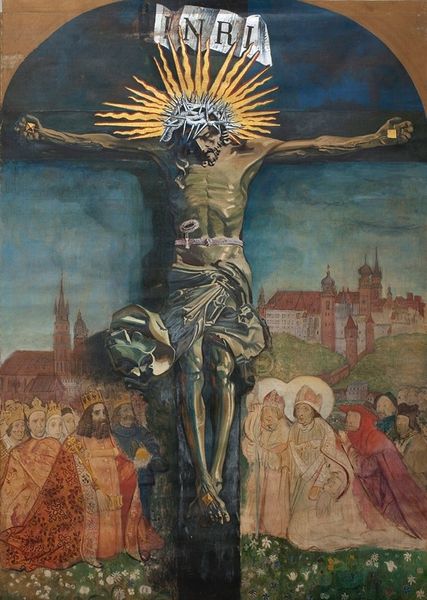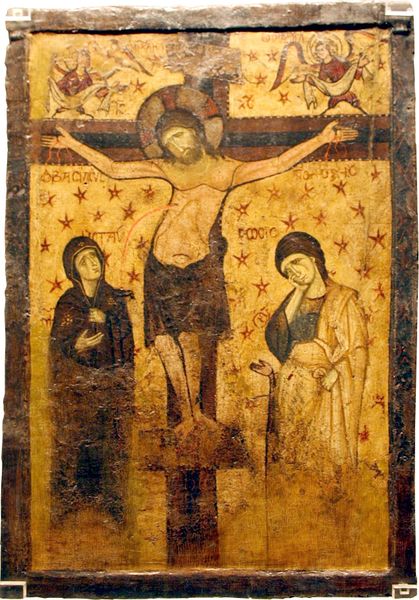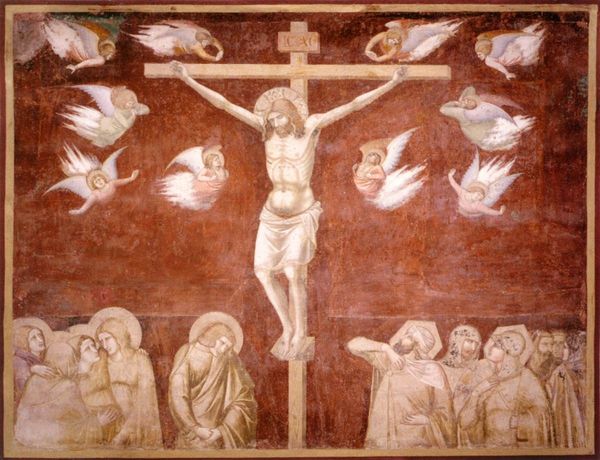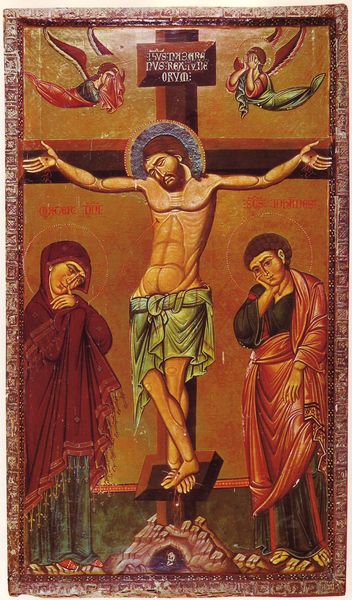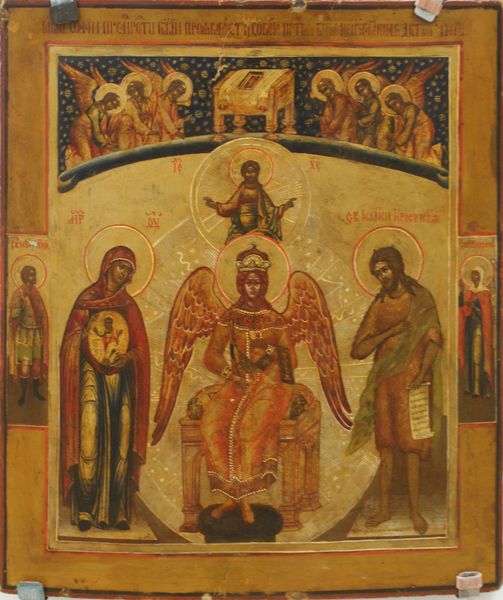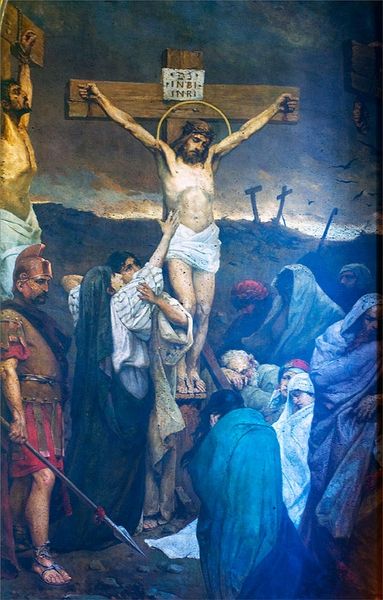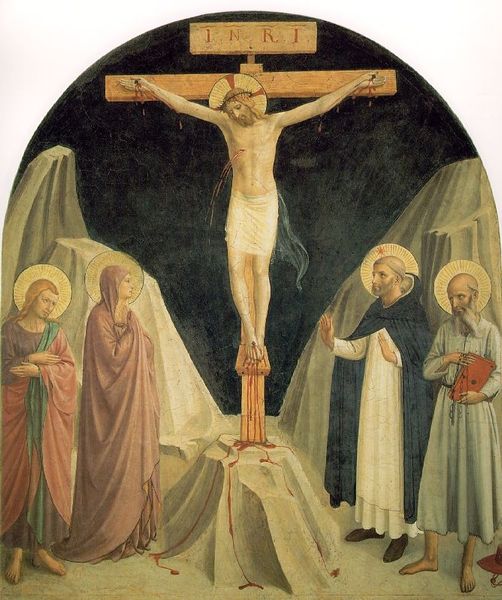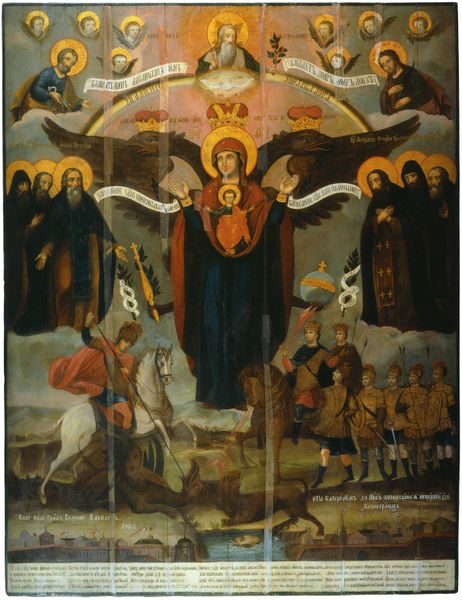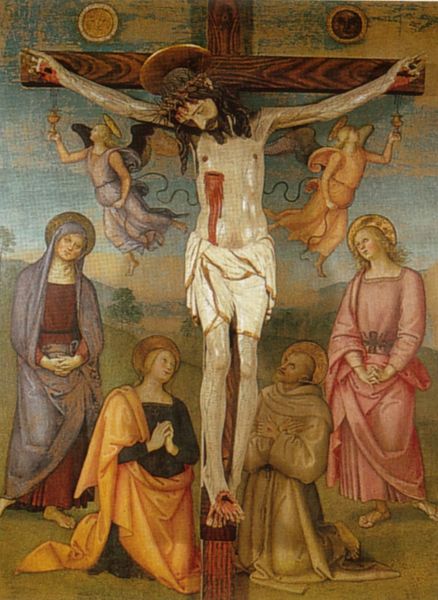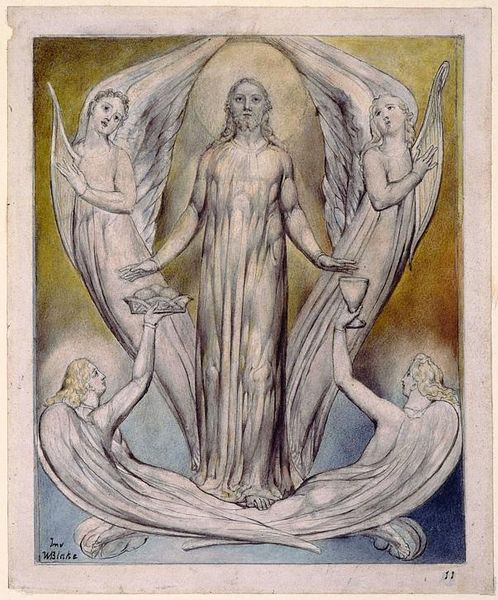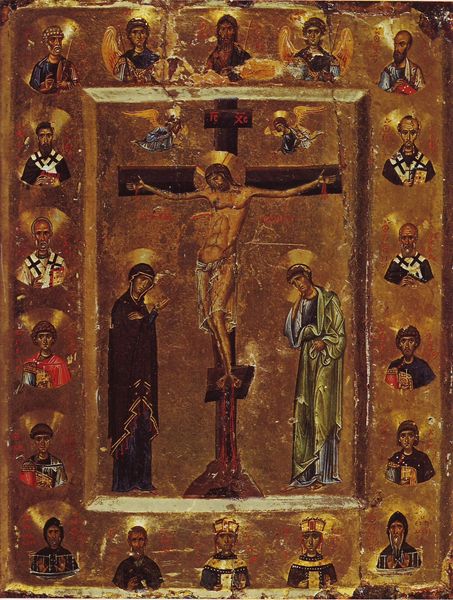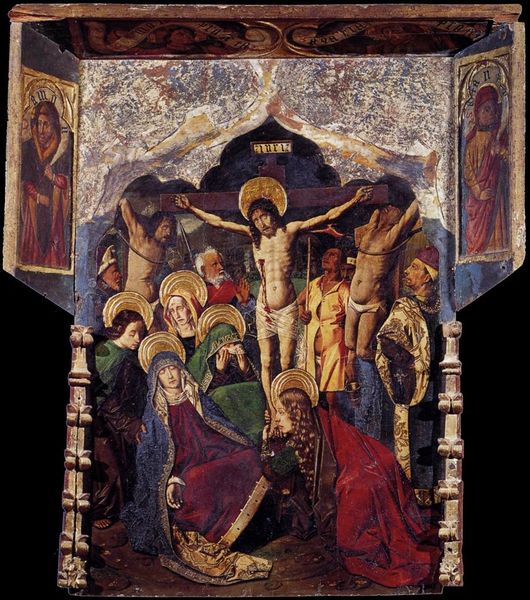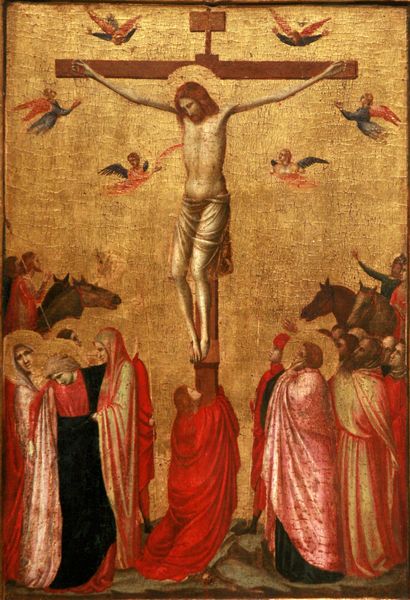
tempera, painting
#
allegories
#
abstract expressionism
#
allegory
#
tempera
#
painting
#
mannerism
#
figuration
#
neo expressionist
#
acrylic on canvas
#
neo-expressionism
#
romanticism
#
expressionism
#
mythology
#
crucifixion
#
history-painting
#
expressionist
Copyright: Ernst Fuchs,Fair Use
Here we see Ernst Fuchs’s depiction of The Sorrowful Rosary, evoking a profound emotional response through its symbolic language. Christ hangs on the cross, flanked by Mary and a defeated Lucifer, while thorny tendrils bearing fruit wind their way up the composition. The cross itself, an ancient symbol of suffering, extends far back into pre-Christian times as a symbol of sacrifice, yet here it’s reborn as the ultimate emblem of Christian redemption. This imagery isn’t confined to the Gospels; the motif of the vanquished Lucifer recalls ancient myths of fallen gods, echoing through centuries. Consider the thorny tendrils, at once a crown of thorns and a promise of fruit. Thorns recur across cultural traditions from ancient Greece to medieval allegories as symbols of pain and suffering, or the soul’s painful journey through sin to eventual redemption. These symbols are not linear; instead, they’re cyclical, resurfacing, evolving, and taking on new meanings in each epoch. They remind us of our shared human experience.
Comments
No comments
Be the first to comment and join the conversation on the ultimate creative platform.
